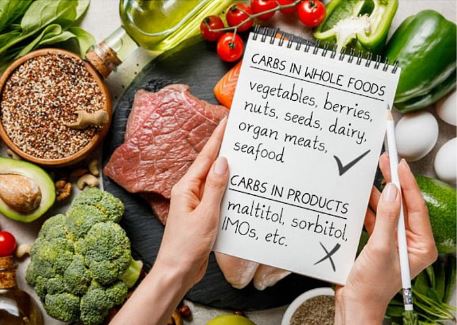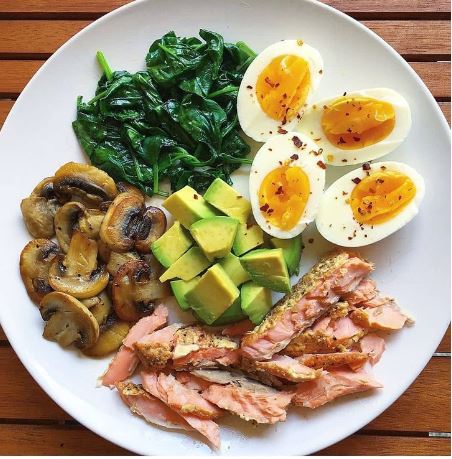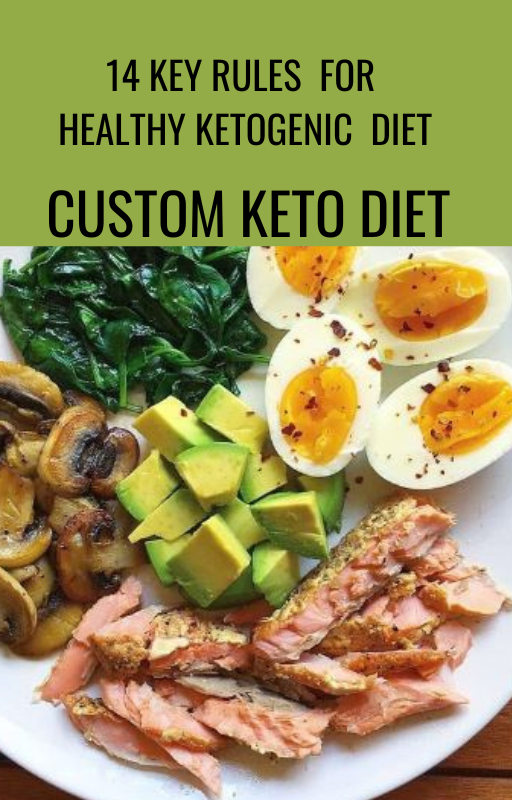What is Keto or Ketogenic Diet?

A ketogenic diet is a high-fat, low-carbohydrate diet that forces the body to burn fat instead of carbohydrates for energy.
It typically involves eating foods high in healthy fats and limiting carbohydrates to a very low amount to achieve a state
of ketosis where the body produces ketones to use as fuel instead of glucose.
How Ketogenic diet helps the metabolic system?
The Custom Keto Diet helps the metabolic system by forcing the body to switch from using glucose as its primary source of energy to using ketones. Ketones are produced from the liver by breaking down the fat. This change in fuel source can lead to improved insulin sensitivity, increased fat burning, and
potentially improved overall metabolism. Additionally, because the diet restricts carbohydrate intake, it can lead to reduced inflammation, which is associated with various metabolic disorders.
What are the key rules to follow for healthy keto diet?

Here are some basic rules to follow in a ketogenic diet:
1.Reduce carbohydrate intake: Limit total carbohydrate intake to around 50-100g per day or less, with an emphasis on low glycemic index (GI) foods.
2.Increase fat intake: Increase the intake of healthy fats such as olive oil, avocado, nuts, and fatty fish to provide the majority of your daily calories.
3.Adequate protein intake: Include enough protein to support muscle maintenance and growth, but not so much that it kicks you out of ketosis.
4.Track your intake: Use a food tracking app or manual methods to keep track of your macronutrient (carbohydrate, protein, fat) intake and make sure you’re staying within the appropriate ranges.
5.Hydrate adequately: Stay hydrated by drinking plenty of water and electrolyte-rich beverages like bone broth or coconut water.
6.Avoid high-carb foods: Avoid foods high in carbohydrates, such as sugary drinks, fruit, grains, and starchy vegetables.
7.Monitor for ketosis: Use urine strips, blood ketone meters, or breath ketone analyzers to monitor for the presence of ketones, indicating that you are in ketosis.
8.Eat whole foods: Focus on eating whole, unprocessed foods like meats, fish, eggs, dairy, non-starchy vegetables, and healthy fats.
9.Minimize processed foods: Avoid highly processed foods, such as packaged snacks, baked goods, and sweetened drinks, as they are often high in carbohydrates and unhealthy fats.
10.Experiment with different types of fat: Try different sources of healthy fats, such as coconut oil, butter, ghee, and MCT oil, to find which work best for you.
11.Incorporate low-carbohydrate options for favorite high-carb foods: There are many keto-friendly substitutes for high-carb foods, such as cauliflower rice for rice, and almond flour for wheat flour.
12.Avoid artificial sweeteners: Some artificial sweeteners can kick you out of ketosis and should be avoided, such as sucralose, aspartame, and acesulfame potassium.
13. Listen to your body: Pay attention to how you feel on the ketogenic diet, and adjust your intake as needed to optimize your health and well-being.
14.Consult a healthcare professional: If you have any pre-existing medical conditions, it’s always a good idea to consult a healthcare professional before making any significant dietary changes.
How Can You Customize your Keto Meal?

Here are the steps you can follow:
Choose healthy fats: olive oil, avocado, coconut oil, butter, fatty fish, nuts and seeds.
Limit processed foods and added sugars.
Include low-carb vegetables such as broccoli, spinach, cauliflower, and zucchini.
Focus on protein sources: meat, poultry, fish, eggs, and dairy products.
Experiment with spices and herbs to add flavor to meals.
Drink plenty of water and unsweetened beverages.
Keep track of net carbs intake.
Consider meal planning and prepping for convenience.
You can also follow OUR “Custom Keto Diet” plan which suites your body.

